Combined Scheduling and Configuration Optimization of Power-to-Methanol System Considering Feedback Control of Thermal Power
Abstract
1. Introduction
- (1)
- Based on the IES, the system framework of P2M is constructed by integrating P2X technology and PCC technology. A mathematical model applicable to MILP is established for the production process of key equipment in the P2M system.
- (2)
- Based on the transfer function model from coal feeding to load output of the thermal power unit, the dynamic characteristics of the thermal power unit are portrayed, the controller for the coal feeding of thermal power unit is designed, and the closed-loop state-space model of the thermal power unit is identified.
- (3)
- The identified closed-loop state-space model of the thermal power unit is introduced into the MILP problem as an additional constraint to compare whether to consider the impact of the dynamic characteristics of the equipment on the capacity configuration of the P2M system.
2. System Description and Modeling
2.1. Structure of the P2M System
2.2. Steady-State Model of P2M System
2.2.1. Wind Turbine (WT) Generation Subsystem
2.2.2. Carbon Capture Subsystem (CCS)
2.2.3. Power-to-Chemical (P2X) Subsystem
2.2.4. Balance of Energy and Mass
2.3. Model Including the Feedback Control of TPG
3. Unified Scheduling and Configuration Optimization
3.1. Constraints
3.2. Objective Function
3.3. Solution
3.4. Case Study
4. Results and Discussion
4.1. Capacity Configuration Optimization Results
4.2. Scheduling Optimization Results
5. Sensitivity Analysis
5.1. Sensitivity Analysis of Economic Parameters
5.2. Sensitivity Analysis of Technical Parameters
6. Conclusions
Author Contributions
Funding
Data Availability Statement
Conflicts of Interest
References
- Zuo, F.; Zhang, Y.; Hua, Q.; Sun, L. Unified scheduling and configuration optimization for power to gas system considering thermal dynamics and uncertainties. Sustain. Energy Technol. Assess. 2024, 64, 103711. [Google Scholar] [CrossRef]
- Domínguez, R.; Carrión, M.; Oggioni, G. Planning and operating a renewable-dominated European power system under uncertainty. Appl. Energy 2020, 258, 113989. [Google Scholar] [CrossRef]
- Zhou, X.; Zhao, Q.; Zhang, Y.; Sun, L. Integrated energy production unit: An innovative concept and design for energy transition toward low-carbon development. CSEE J. Power Energy Syst. 2021, 7, 1133–1139. [Google Scholar]
- Mendoza, J.M.F.; Ibarra, D. Technology-enabled circular business models for the hybridisation of wind farms: Integrated wind and solar energy, power-to-gas and power-to-liquid systems. Sustain. Prod. Consump. 2023, 36, 308–327. [Google Scholar] [CrossRef]
- Turk, A.; Wu, Q.; Zhang, M. Model predictive control based real-time scheduling for balancing multiple uncertainties in integrated energy system with power-to-x. Int. J. Elec. Power 2021, 130, 107015. [Google Scholar] [CrossRef]
- Yang, L.; Wu, X. Net-zero carbon configuration approach for direct air carbon capture based integrated energy system considering dynamic characteristics of CO2 adsorption and desorption. Appl. Energy 2024, 358, 122608. [Google Scholar] [CrossRef]
- Guo, J.; Wu, D.; Wang, Y.; Wang, L.; Guo, H. Co-optimization method research and comprehensive benefits analysis of regional integrated energy system. Appl. Energy 2023, 340, 121034. [Google Scholar] [CrossRef]
- Huang, W.; Zhang, N.; Yang, J.; Wang, Y.; Kang, C. Optimal Configuration Planning of Multi-Energy Systems Considering Distributed Renewable Energy. IEEE Trans. Smart Grid 2019, 10, 1452–1464. [Google Scholar] [CrossRef]
- Giri, B.K.; Roy, S.K. Fuzzy-random robust flexible programming on sustainable closed-loop renewable energy supply chain. Appl. Energy 2024, 363, 123044. [Google Scholar] [CrossRef]
- Qiao, Y.; Hu, F.; Xiong, W.; Guo, Z.; Zhou, X.; Li, Y. Multi-objective optimization of integrated energy system considering installation configuration. Energy 2023, 263, 125785. [Google Scholar] [CrossRef]
- Gao, M.; Han, Z.; Zhang, C.; Li, P.; Wu, D.; Li, P. Optimal configuration for regional integrated energy systems with multi-element hybrid energy storage. Energy 2023, 277, 127672. [Google Scholar] [CrossRef]
- Yang, X.; Zhang, Z.; Mei, L.; Wang, X.; Deng, Y.; Wei, S.; Liu, X. Optimal configuration of improved integrated energy system based on stepped carbon penalty response and improved power to gas. Energy 2023, 263, 125985. [Google Scholar] [CrossRef]
- Zhang, X.; Li, J.; Zhang, L.; Wu, B.; Wang, L.; Tang, W.; Guo, Y. IES configuration method considering peak-valley differences of tie lines and operation costs of power grids. IET Energy Syst. Integr. 2020, 2, 92–100. [Google Scholar] [CrossRef]
- Elwardany, M.; Nassib, A.M.; Mohamed, H.A. Advancing sustainable thermal power generation: Insights from recent energy and exergy studies. Process Saf. Environ. Prot. 2024, 183, 617–644. [Google Scholar] [CrossRef]
- Li, Y.; Zhang, J.; Wu, X.; Shen, J.; Lee, K.Y. Optimal design of combined cooling, heating and power multi-energy system based on load tracking performance evaluation of adjustable equipment. Appl. Therm. Eng. 2022, 211, 118423. [Google Scholar] [CrossRef]
- Chang, D.; Shen, J.; Zhang, J. Day-ahead and Intraday Optimal Dispatch Schedule for MGT-IES Considering the Dynamic Characteristics of Main Equipment. In Proceedings of the 2021 6th International Conference on Power and Renewable Energy (ICPRE), Shanghai, China, 17–20 September 2021; pp. 1295–1302. [Google Scholar]
- Barros, F.S.; Graça, P.A.; Lima, J.J.G.; Pinto, R.F.; Restivo, A.; Villa, M. Using Recurrent Neural Networks to improve initial conditions for a solar wind forecasting model. Eng. Appl. Artif. Intell. 2024, 133, 108266. [Google Scholar] [CrossRef]
- Budinis, S.; Krevor, S.; Dowell, N.M.; Brandon, N.; Hawkes, A. An assessment of CCS costs, barriers and potential. Energy Strat. Rev. 2018, 22, 61–81. [Google Scholar] [CrossRef]
- Shao, Y.; He, X.; Yang, C.; Zhu, Y.; Liu, C.; Shao, L.; Gao, X. Techno-economic evaluation of CO2 capture and storage retrofit in decarbonizing different thermal power plants: A case study in China. Appl. Therm. Eng. 2024, 242, 122380. [Google Scholar] [CrossRef]
- Bonfiglio, A.; Lodi, M.; Rosini, A.; Oliveri, A.; Procopio, R. Design, realization and testing of a synthetic inertia controller for wind turbine power generators. Sustain. Energy Grids Netw. 2024, 38, 101234. [Google Scholar]
- Chang, C.C.W.; Ding, T.J.; Ping, T.J.; Chao, K.C.; Bhuiyan, M.A.S. Getting more from the wind: Recent advancements and challenges in generators development for wind turbines. Sustain. Energy Technol. Assess. 2022, 53, 102731. [Google Scholar]
- Zhang, X.; Bai, Y.; Zhang, Y. Collaborative optimization for a multi-energy system considering carbon capture system and power to gas technology. Sustain. Energy Technol. Assess. 2022, 49, 101765. [Google Scholar] [CrossRef]
- Khan, M.S.; Lin, Z.; Lin, L.; Abid, M.; Ali, H.M.; Chen, C. Techno-economic analysis of solar-driven co-electrolysis for renewable methanol production using SOEC. Energy Convers. Manag. 2024, 302, 118129. [Google Scholar] [CrossRef]
- Ye, J.; Zhang, Y.; Hao, Y.; Lee, K.Y.; Sun, L. Configuration optimization and techno-economic analysis of integrated energy production unit of methane and methanol. Sustain. Energy Technol. Assess. 2024, 69, 103902. [Google Scholar] [CrossRef]
- Zhang, X.; Zhang, Y. Environment-friendly and economical scheduling optimization for integrated energy system considering power-to-gas technology and carbon capture power plant. J. Clean. Prod. 2020, 276, 123348. [Google Scholar] [CrossRef]
- Zhang, H.; Gao, M.; Fan, H.; Zhang, K.; Zhang, J. A dynamic model for supercritical once-through circulating fluidized bed boiler-turbine units. Energy 2022, 241, 122914. [Google Scholar] [CrossRef]
- Haouat, Z.; Essalih, S.; Bennouna, F.; Ramadany, M.; Amegouz, D. Environmental optimization and operational efficiency: Analysing the integration of life cycle assessment (LCA) into ERP systems in Moroccan companies. Results Eng. 2024, 22, 102131. [Google Scholar] [CrossRef]
- Fleszar, K. A new MILP model and fast heuristics for the variable-sized bin packing problem with time windows. Comput. Ind. Eng. 2023, 175, 108849. [Google Scholar] [CrossRef]
- Zhou, J.; Zhang, W. Coal consumption prediction in thermal power units: A feature construction and selection method. Energy 2023, 273, 126996. [Google Scholar] [CrossRef]
- Zuo, F.; Zhang, Y.; Zhao, Q.; Sun, L. Two-stage Stochastic Optimization for Operation Scheduling and Capacity Allocation of Integrated Energy Production Unit Considering Supply and Demand Uncertainty-All Databases. Proc. Chin. Soc. Electr. Eng. 2022, 42, 8205–8214. [Google Scholar]
- Jing, R.; Wang, M.; Wang, W.; Brandon, N.; Li, N.; Chen, J.; Zhao, Y. Economic and environmental multi-optimal design and dispatch of solid oxide fuel cell based CCHP system. Energy Convers. Manag. 2017, 154, 365–379. [Google Scholar] [CrossRef]
- Fuguo, L.; Xuhui, Z. Determination of load-impacted curve on generation efficiency of coal-fired unit by two-point method. Therm. Power Gener. 2020, 49, 87–92. (In Chinese) [Google Scholar]
- Luo, F.; Shao, J.; Jiao, Z.; Zhang, T. Research on optimal allocation strategy of multiple energy storage in regional integrated energy system based on operation benefit increment. Int. J. Electr. Power Energy Syst. 2021, 125, 106376. [Google Scholar] [CrossRef]
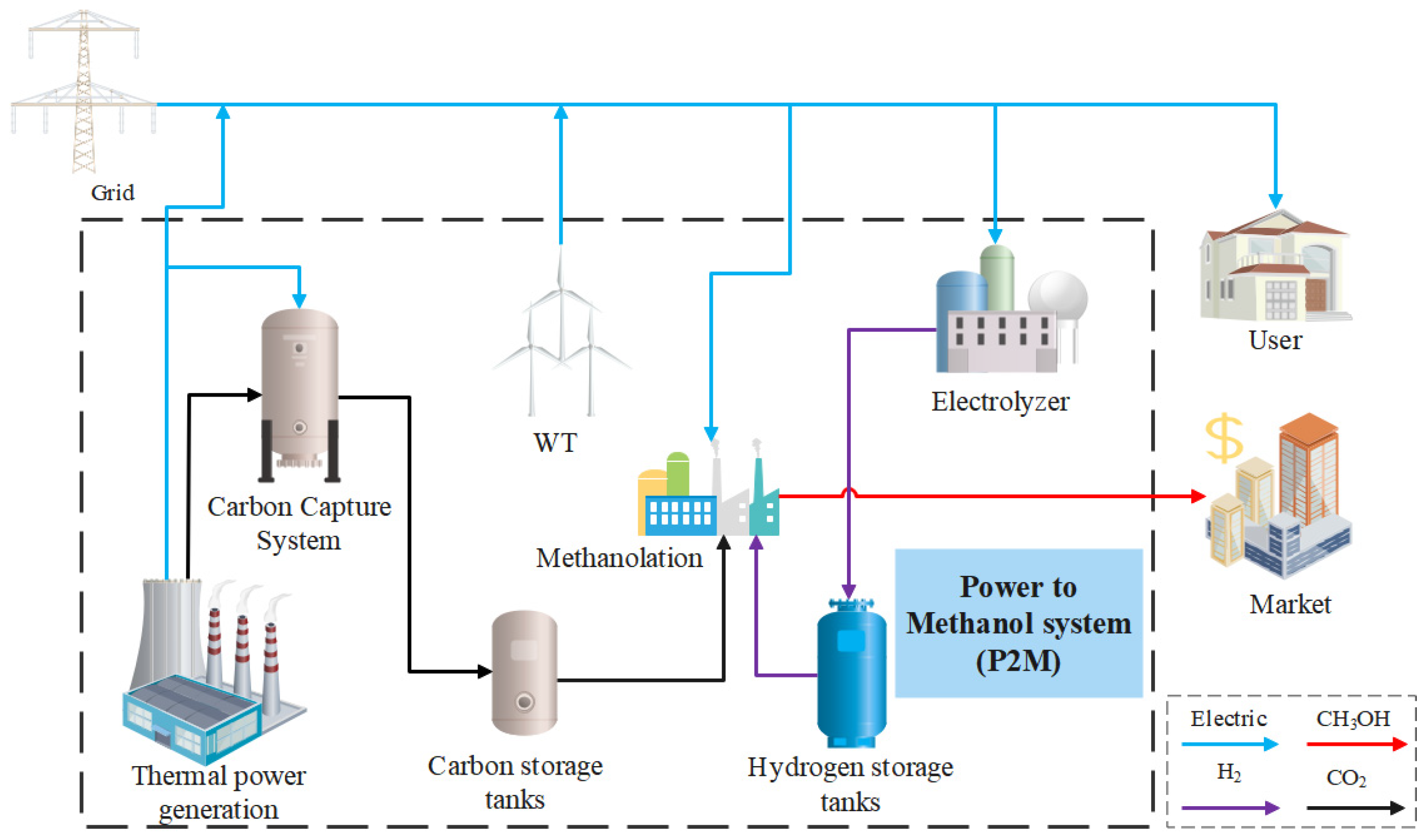




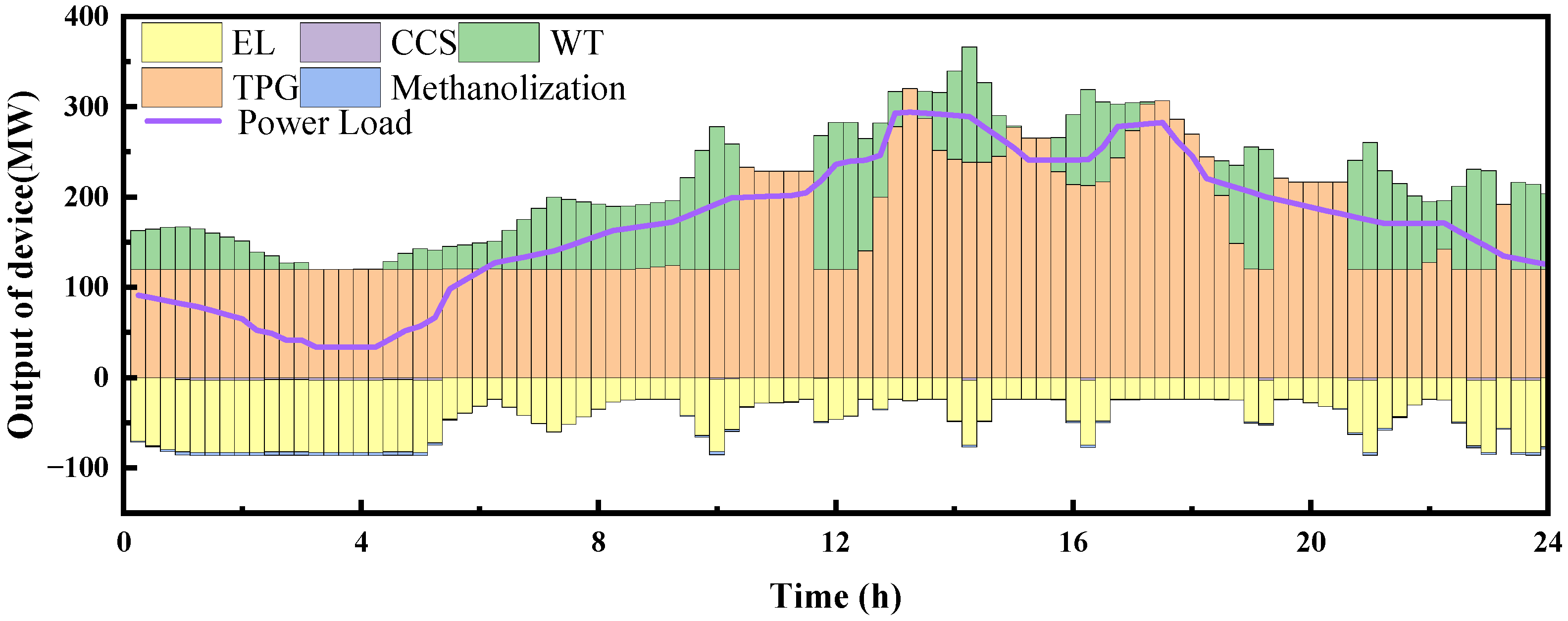

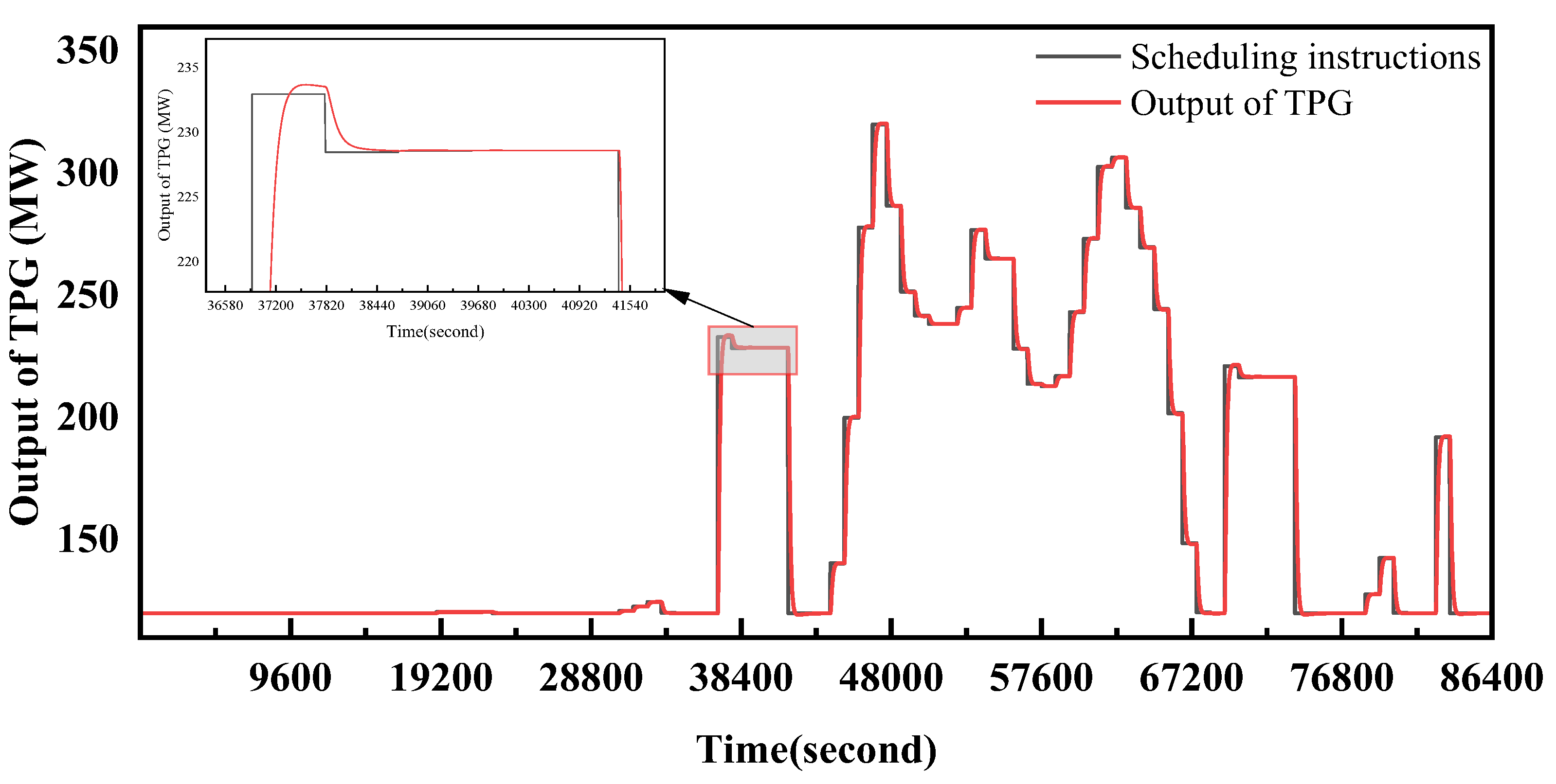
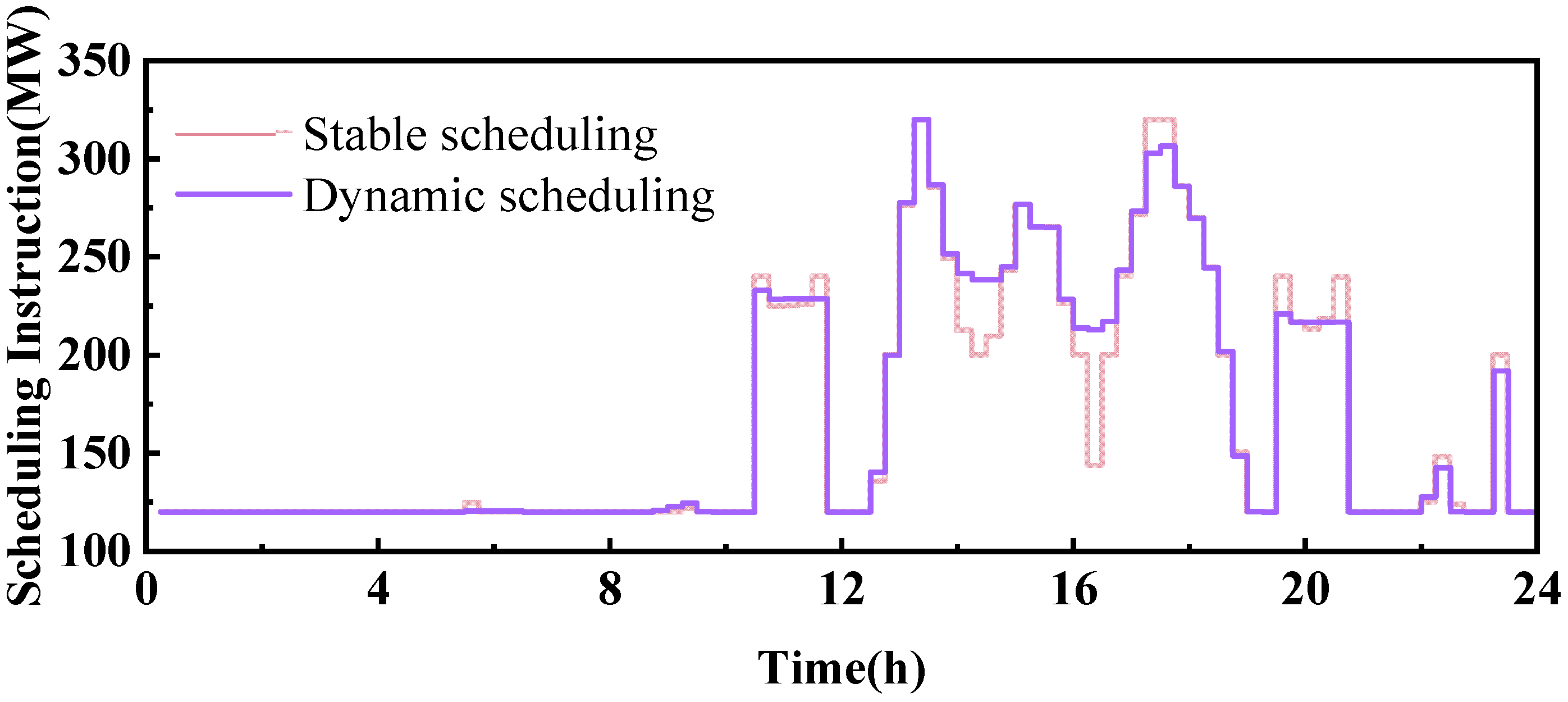
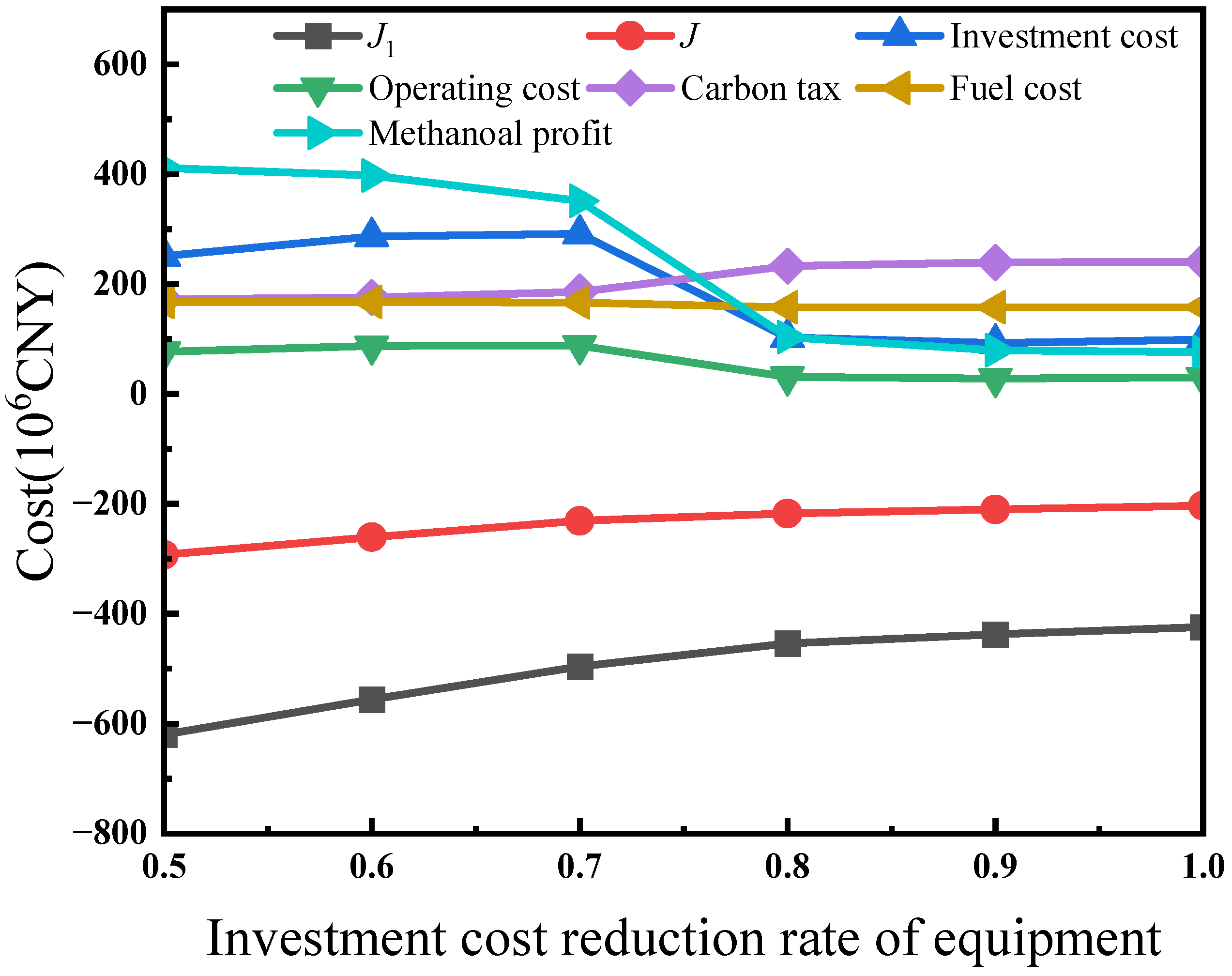
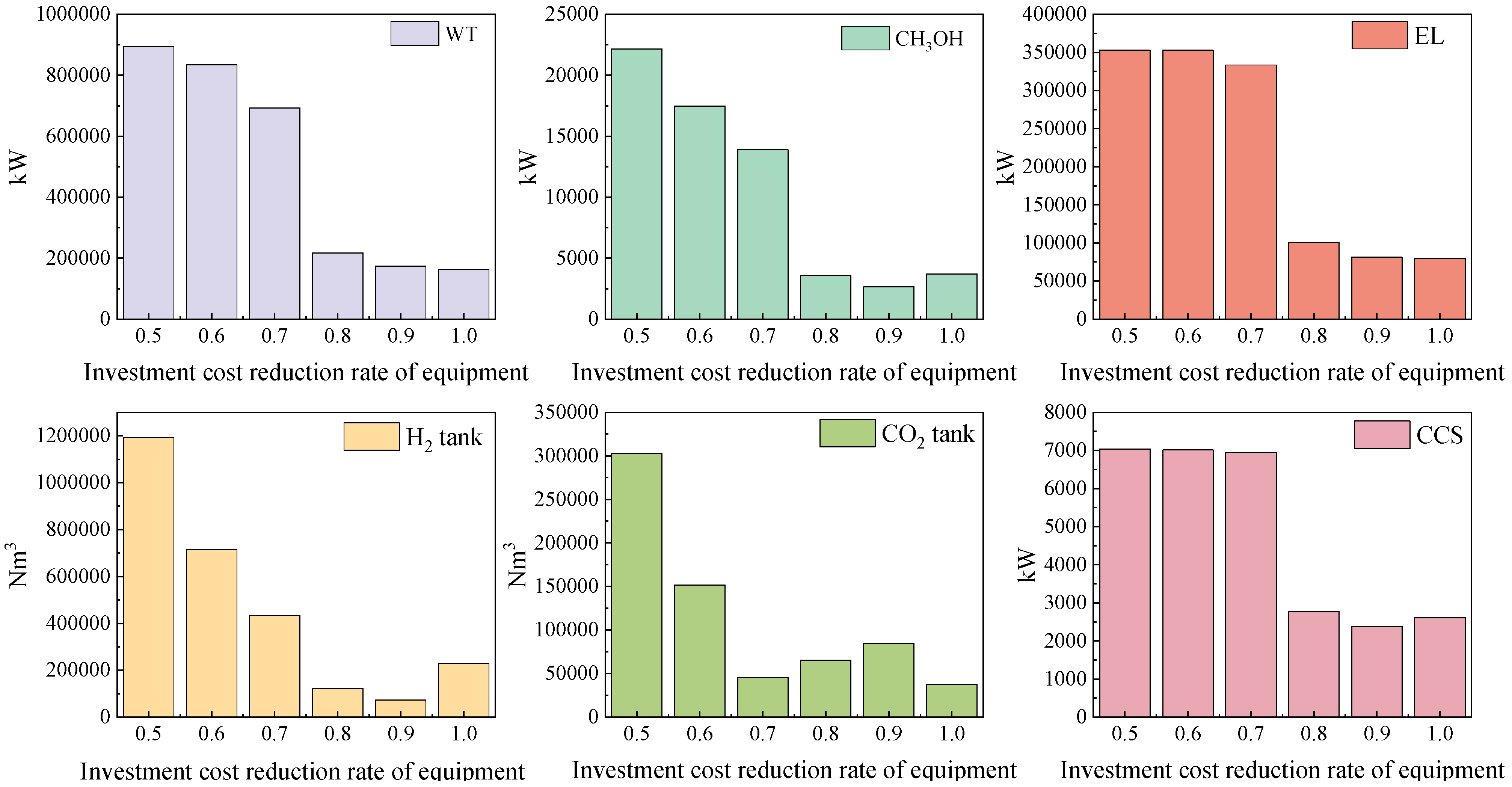
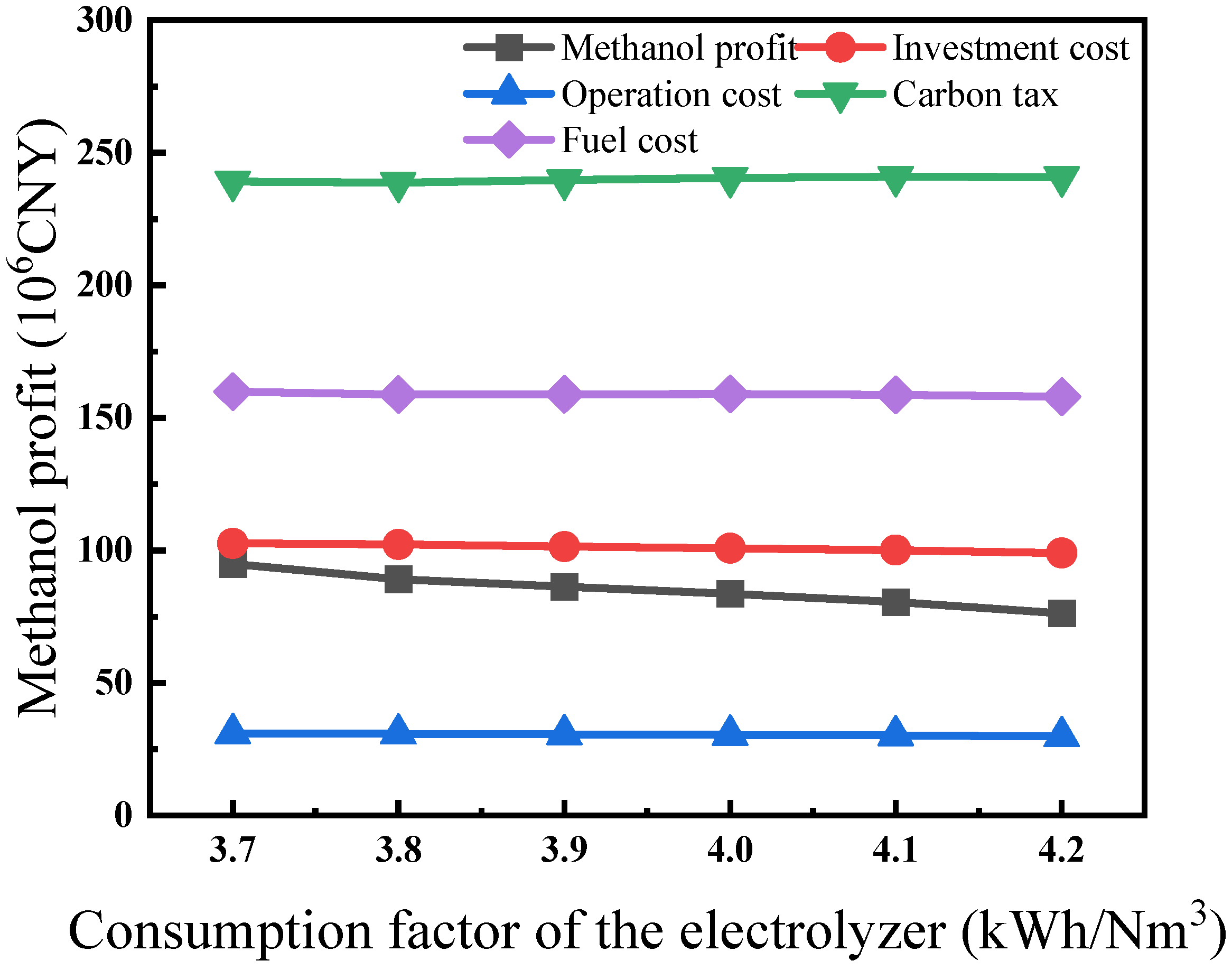
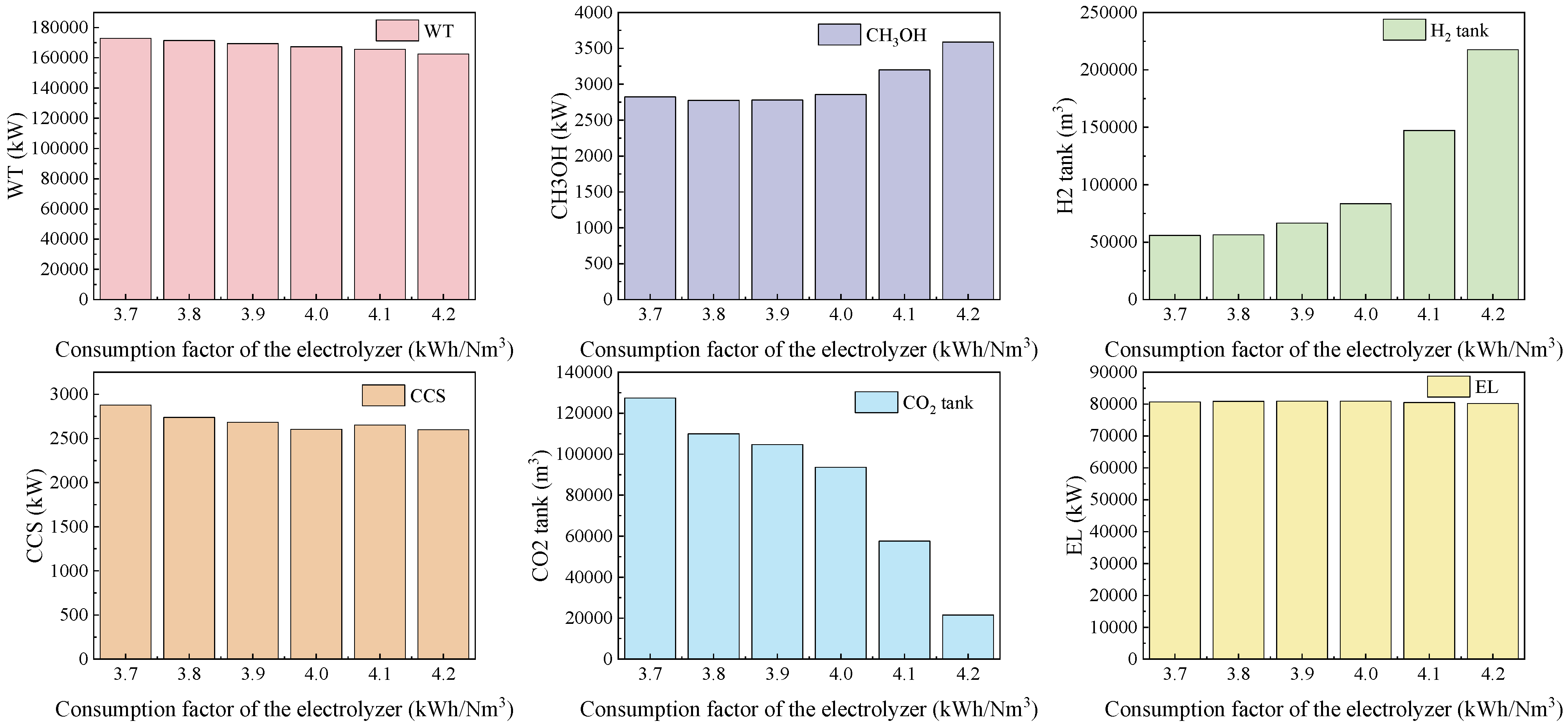
| Technical Parameter | Unit | Quantity | |
|---|---|---|---|
| Velocity | Cut-in wind velocity | m/s | 2.5 |
| Rated wind velocity | 5.2 | ||
| Cut-out wind velocity | 5.8 | ||
| Electricity consumption coefficient of the electrolyzer [10] | (kWh)/(Nm3H2) | 4.2 | |
| Carbon dioxide emission intensity of the thermal power plant [29] | (Nm3CO2)/(kWh) | 0.46 | |
| The maximum CO2 capture efficiency [29] | 1 | 0.65 | |
| Electricity consumption coefficient for the actual capture of carbon dioxide [30] | (kWh)/(Nm3CO2) | 0.3 | |
| Coefficient of electricity consumption in the synthesis of methanol [31] | (kWh)/(Nm3CH3OH) | 0.15 | |
| Conversion factor for methanol | 1 | 1 | |
| Capacity of the thermal power plant | MW | 400 | |
| Specific coal consumption for thermal power generation [32] | kg/(kWh) | ||
| Equipment | Investment Cost (CNY/kW or CNY/Nm3) | Ratio of Operation Cost to Investment Cost |
|---|---|---|
| Wind turbine | 3000 | 0.04 |
| Electrolyzer | 4000 | 0.03 |
| Carbon capture system | 1500 | 0.03 |
| Methanolation equipment | 3000 | 0.05 |
| Hydrogen storage tanks | 7.76 | 0.02 |
| Carbon storage tanks | 7.76 | 0.02 |
| Category | Time | Price |
|---|---|---|
| Electricity price [29] | 01:00–08:00 | 0.382 CNY/(kWh) |
| 08:00–12:00 | 0.54 CNY/(kWh) | |
| 16:00–19:00 | ||
| 22:00–24:00 | 0.922 CNY/(kWh) | |
| 12:00–16:00 | ||
| 19:00–22:00 | ||
| Methanol [31] | 01:00–24:00 | 2.0 CNY/kg |
| Coal price [29] | 01:00–24:00 | 320 CNY/tce |
| Carbon tax [33] | 01:00–24:00 | 0.6 CNY/(Nm3) |
| Equipment | Unit | Configuration Result | Relative Deviation (%) | |
|---|---|---|---|---|
| Steady-State Model | Dynamic Model | |||
| Wind turbine | MW | 169.55 | 162.36 | −4.24 |
| Methanolation equipment | MW | 2.91 | 3.69 | 26.77 |
| Electrolyzer | MW | 80.79 | 80.09 | −0.87 |
| Hydrogen tank | kNm3 | 117.96 | 229.70 | 94.72 |
| Carbon dioxide tank | kNm3 | 90.81 | 37.50 | −58.71 |
| Carbon capture system | MW | 2.69 | 2.61 | −2.97 |
Disclaimer/Publisher’s Note: The statements, opinions and data contained in all publications are solely those of the individual author(s) and contributor(s) and not of MDPI and/or the editor(s). MDPI and/or the editor(s) disclaim responsibility for any injury to people or property resulting from any ideas, methods, instructions or products referred to in the content. |
© 2025 by the authors. Licensee MDPI, Basel, Switzerland. This article is an open access article distributed under the terms and conditions of the Creative Commons Attribution (CC BY) license (https://creativecommons.org/licenses/by/4.0/).
Share and Cite
Ye, J.; Liu, Y.; Sun, L.; Chen, K. Combined Scheduling and Configuration Optimization of Power-to-Methanol System Considering Feedback Control of Thermal Power. Energies 2025, 18, 1210. https://doi.org/10.3390/en18051210
Ye J, Liu Y, Sun L, Chen K. Combined Scheduling and Configuration Optimization of Power-to-Methanol System Considering Feedback Control of Thermal Power. Energies. 2025; 18(5):1210. https://doi.org/10.3390/en18051210
Chicago/Turabian StyleYe, Junjie, Yinghui Liu, Li Sun, and Ke Chen. 2025. "Combined Scheduling and Configuration Optimization of Power-to-Methanol System Considering Feedback Control of Thermal Power" Energies 18, no. 5: 1210. https://doi.org/10.3390/en18051210
APA StyleYe, J., Liu, Y., Sun, L., & Chen, K. (2025). Combined Scheduling and Configuration Optimization of Power-to-Methanol System Considering Feedback Control of Thermal Power. Energies, 18(5), 1210. https://doi.org/10.3390/en18051210






